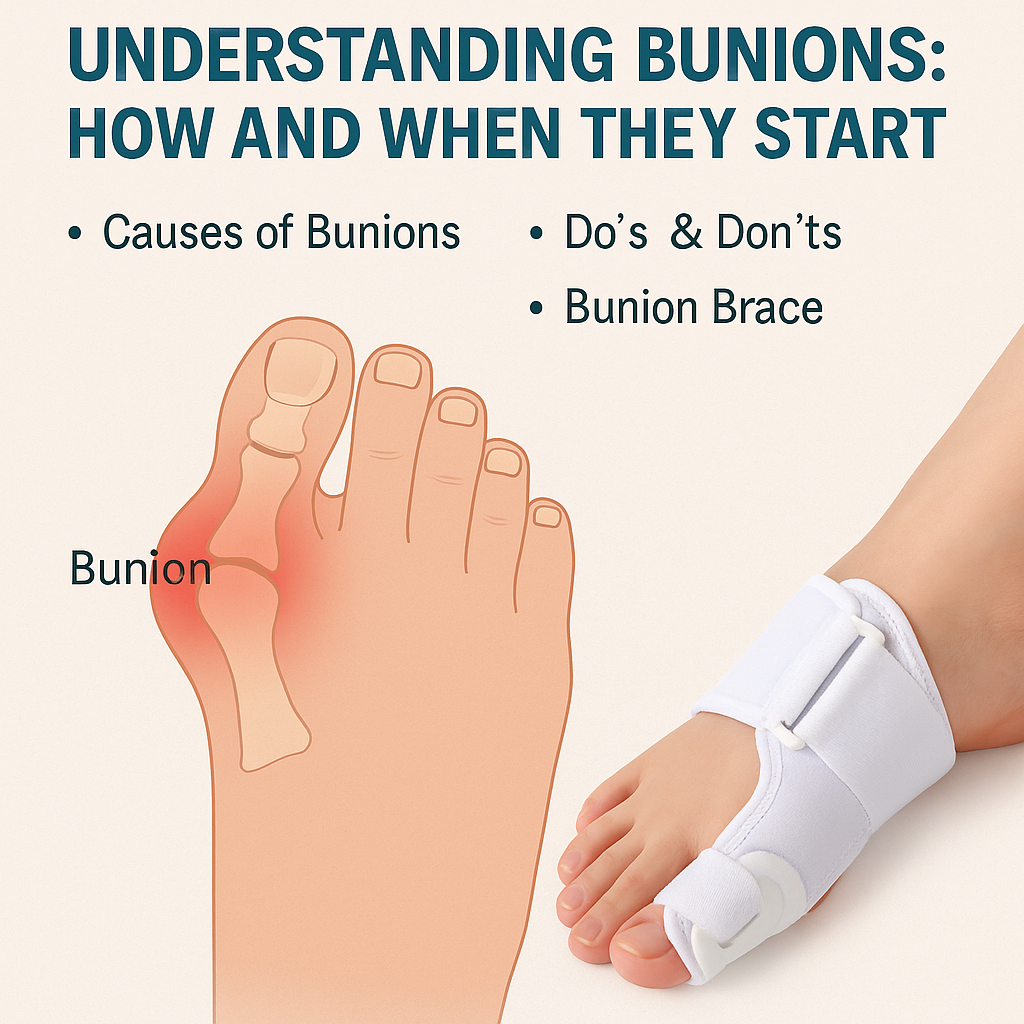
Understanding Bunions: How and When They Start
Share
What Is a Bunion?
A bunion—medically known as hallux valgus—is a bony bump that forms along the inside edge of your big toe joint (the metatarsophalangeal or MTP joint). As the first metatarsal bone shifts outward, the big toe angles inward toward the second toe, creating a protruding, often tender bump.
This process develops gradually over months or years, and while bunions most often occur in adults aged 20 to 50, they can also appear in children and teenagers, especially during growth spurts.
When Do Bunions Begin?
Bunions usually start subtly—perhaps with mild discomfort after wearing tight shoes—and gradually worsen over time. If left untreated, they can lead to chronic pain and deformity.
What Causes Bunions?
Although there’s no single cause, several factors contribute to bunion formation:
- Genetics and foot structure: Inherited traits such as flat feet or abnormal joint flexibility can make you more prone to bunions.
- Foot mechanics: Poor foot alignment or instability in the joint increases strain over time.
- Footwear: Tight, narrow, or high-heeled shoes can accelerate bunion development by crowding the toes.
- Medical conditions: Arthritis, injuries, and other inflammatory conditions can contribute.
Symptoms to Watch For
- A visible bump on the side of your big toe
- Pain, swelling, or redness around the joint
- Corns or calluses where the big toe overlaps the second toe
- Restricted toe movement
- Difficulty finding comfortable shoes
Do’s & Don’ts for Managing Bunions
✅ Do’s
- Wear proper footwear: Choose shoes with a wide toe box and soft materials.
- Use supportive devices: Orthotics, toe spacers, or a bunion brace can help maintain alignment.
- Stretch and strengthen your feet: Gentle exercises can improve flexibility and reduce strain.
- Apply padding or cushioning: Reduce pressure and friction over the bunion.
- Address issues early: Early intervention slows progression and helps prevent complications.
❌ Don’ts
- Don’t ignore early signs — bunions are progressive and will not go away without action.
- Don’t wear narrow or high-heeled shoes for long periods.
- Don’t rely solely on painkillers — they may hide the problem without fixing alignment.
- Don’t delay professional advice if pain worsens or mobility decreases.
Introducing the 26 Apothecary Bunion Brace
When you want a non-surgical, practical solution, the 26 Apothecary Bunion Brace offers comfort and corrective support in one.
Why It Works
- Relieves pressure: Soft padding reduces shoe friction and joint irritation.
- Encourages realignment: Gently guides the big toe toward its natural position.
- Adjustable fit: Breathable, flexible design to suit different foot shapes.
- Everyday wear: Suitable for casual, work, or evening shoes.
Tips for Best Results
- Start with short wear times, then increase gradually.
- Pair with stretching exercises and wide, supportive shoes.
- Use consistently for lasting improvement in comfort and alignment.
Bunions may start small, but without attention, they can seriously impact your mobility and comfort. By choosing the right footwear, practicing foot care, and using corrective tools like the 26 Apothecary Bunion Brace, you can relieve pain, improve alignment, and slow progression—without surgery.
